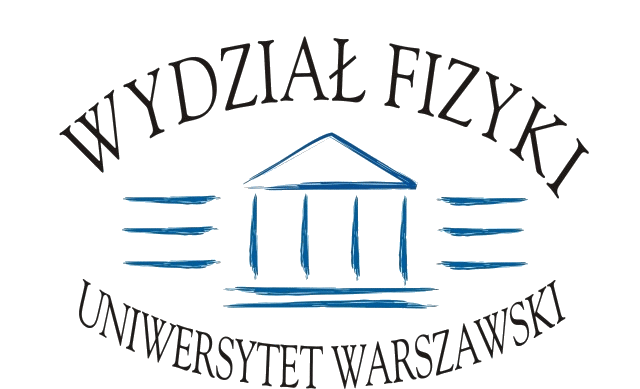Soft Matter and Complex Systems Seminar
2006/2007 | 2007/2008 | 2008/2009 | 2009/2010 | 2010/2011 | 2011/2012 | 2012/2013 | 2013/2014 | 2014/2015 | 2015/2016 | 2016/2017 | 2017/2018 | 2018/2019 | 2019/2020 | 2020/2021 | 2021/2022 | 2022/2023 | 2023/2024 | 2024/2025 | 2025/2026
2024-10-25 (Piątek)
Łukasz Klotz (Warsaw University of Technology)
Influence of porous material on the flow behind backward-facing step - experimental study
We investigate effect of porous insert located upstream of the separation edge of backward facing step (BFS) in early transitional regime as a function of Reynolds number. This is an example of hydrodynamic system that is a combination of separated shear flow with large amplification potential and porous materials known for efficient flow destabilisation. Spectral analysis reveals that dynamics of backward-facing step is dominated by spectral modes that remain globally coherent along the streamwise direction. We detect two branches of characteristic frequencies in the flow and with Hilbert transform we characterise their spatial support. For low Reynolds numbers, the dynamics of the flow is dominated by lower frequency, whereas for sufficiently large Reynolds numbers cross-over to higher frequencies is observed. Increasing permeability of the porous insert results in decrease in Reynolds number value, at which frequency cross-over occurs. By comparing normalized frequencies on each branch with local stability analysis, we attribute Kelvin-Helmholtz and Tollmien-Schlichting instabilities to upper and lower frequency branches, respectively. Finally, our results show that porous inserts enhance Kelvin-Helmholtz instability and promote transition to oscillator type dynamics. Specifically, the amplitude of vortical (BFS) structures associated with higher frequency branch follows Landau model prediction for all investigated porous inserts.
2024-10-18 (Piątek)
Krzysztof Kuczera (Department of Chemistry and Department of Molecular Biosciences, The University of Kansas, Lawrence, KS, USA)
Discovery and Characterization of Blood-Brain Barrier Modulating Peptides based on E-cadherin
AbstractThe delivery of pharmaceutical agents to the central nervous system is hindered by the Blood-Brain Barrier (BBB), a network of inter-cellular interactions of the epithelium. Here, we present a search for novel peptides able to modulate the BBB, focusing on the E-cadherin protein, which is involved in the formation of these intercellular junctions. Previously, two classes of peptides, HAV and ADT, were known to modulate BBB permeability in vitro and in vivo. Here we use computational methods to perform a systematic search for novel peptides which can effectively interfere with E-cadherin interactions. Employing protein-protein and peptide-protein docking methods with varied levels of flexibility, we propose 115 different peptides with a high binding affinity for E-cadherin as candidates for disrupting the BBB. Several strongest binders have been selected for experimental validation and further sequence optimization. Additionally, conformations of selected peptides in aqueous solution were explored with molecular dynamics simulations, showing a general preference for extended structures and fast conformational equilibria, on the 10-100 ns time scales. Thus, this work presents a systematic computational approach for generating novel peptides with high potential for disrupting the BBB and enabling drug delivery to the central nervous system.
2024-10-11 (Piątek)
Andrej Vilfan (J. Stefan Institute, Ljubljana, Slovenia)
Minimum dissipation theorems for microswimmers
Microswimmers are natural or artificial self-propelled microscaleobjects moving through a fluid at low Reynolds numbers. The entropyproduction of microswimmers, related to their dissipated power,consists of two contributions. The external dissipation takes place inthe viscous fluid surrounding the microswimmer. Internal dissipationtakes place in the propulsive layer on the swimmer's surface. We haveshown that a lower bound on the external dissipation can be derivedwith the knowledge of drag coefficients of two bodies of the sameshape, one with a no-slip and one with a perfect slip boundarycondition [1]. This approach can be generalized to take into accountthe internal dissipation, which is often the dominant contribution. Bycombining the Helmholtz minimum dissipation theorem and the principleof linear superposition, we solve the combined minimum dissipationproblem for different classes of swimmers including surface-drivenviscous droplets, Marangoni surfers, etc. [2,3]. We show that theminimum entropy production in suspensions of active microswimmersdiffers fundamentally from particles driven by external forces.
[1] B. Nasouri, A. Vilfan and R. Golestanian, Phys. Rev. Lett., 126,034503 (2021)
[2] A. Daddi-Moussa-Ider, R. Golestanian and A. Vilfan, Nat. Commun.14, 6060 (2023)
[3] A. Daddi-Moussa-Ider, R. Golestanian and A. Vilfan, J. Fluid Mech.986, A32 (2024)
[1] B. Nasouri, A. Vilfan and R. Golestanian, Phys. Rev. Lett., 126,034503 (2021)
[2] A. Daddi-Moussa-Ider, R. Golestanian and A. Vilfan, Nat. Commun.14, 6060 (2023)
[3] A. Daddi-Moussa-Ider, R. Golestanian and A. Vilfan, J. Fluid Mech.986, A32 (2024)
2024-10-04 (Piątek)
Panagiotis Theodorakis (Institute of Physics, Polish Academy of Sciences)
Soft Matter Matters
In this presentation, I will talk about a range of different soft matter matters (problems) that have recently been tackled in the group of Soft Matter and Fluids Physics by using a wide spectrum of methods from molecular to continuum scales. This soft matter matters for various applications ranging from printing and spayring technologies to cooling and employs different soft-matter matters. A series of key simulation results will be discussed for various interesting phenomena, providing understanding of underlying mechanisms and design principles for functional matter (materials) in specific applications. On the modeling side, I will also talk about the ongoing development of the general-purpose many-body dissipative particle dynamics force-field based on the MARTINI coarse-graining approach (MDPD-MARTINI), which enables us to simulate a wide spectrum of soft matter systems with a significant speed-up with respect to molecular dynamics.
Stron 3 z 3






